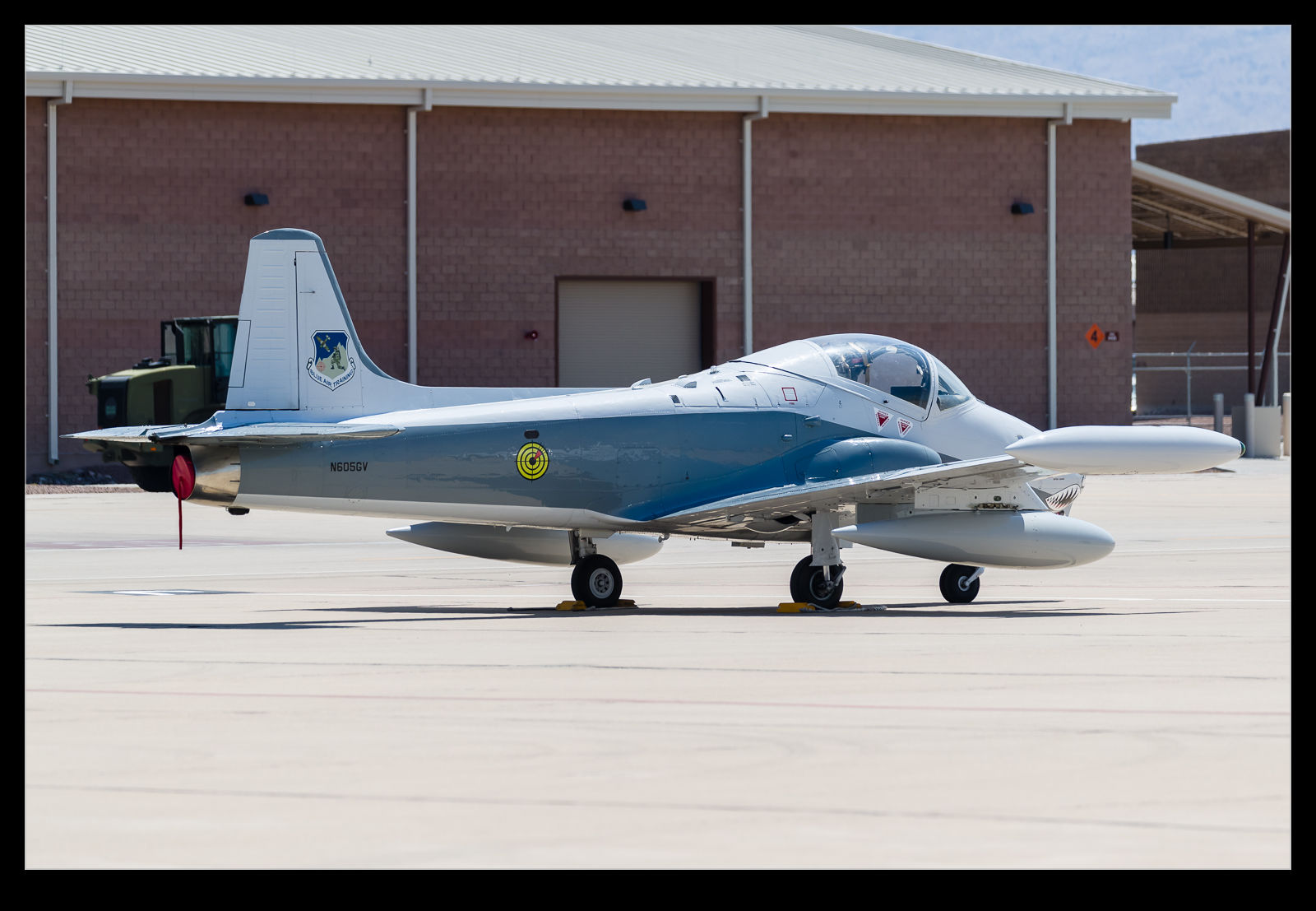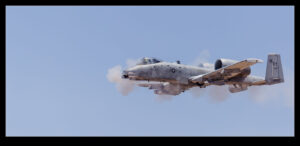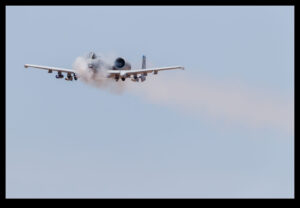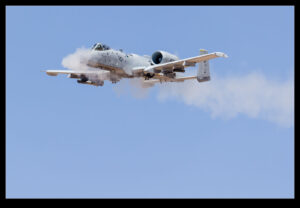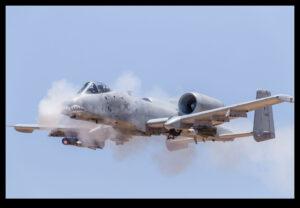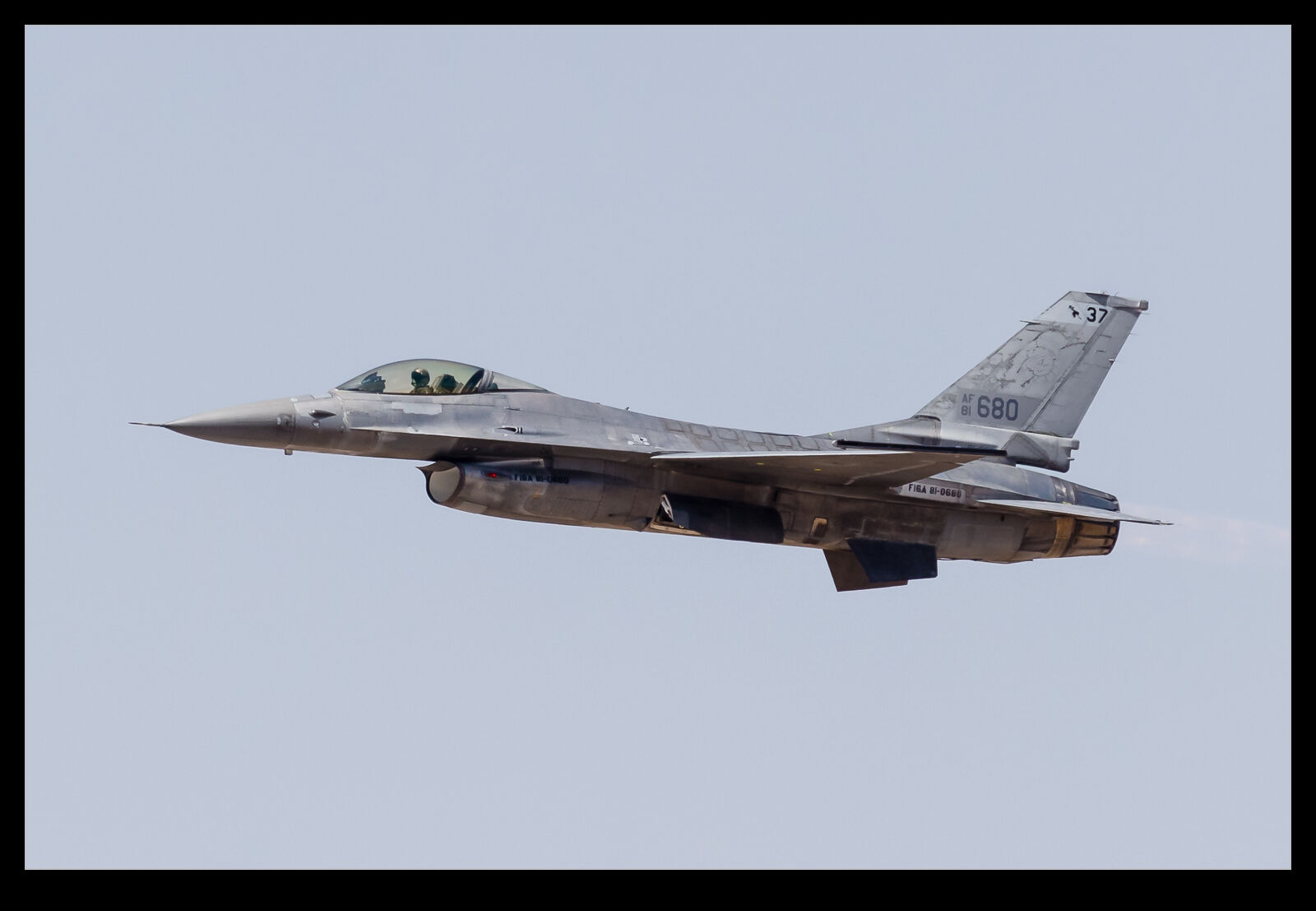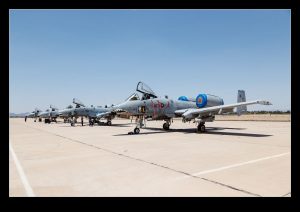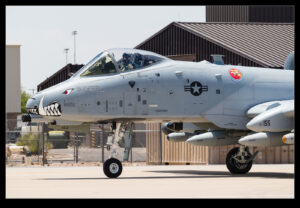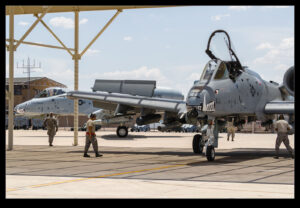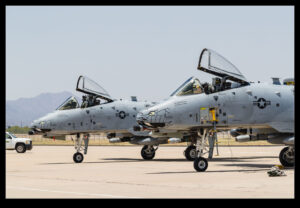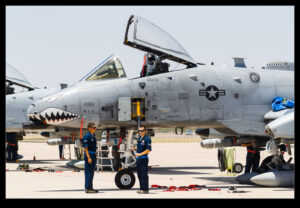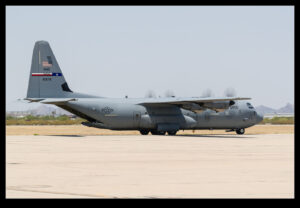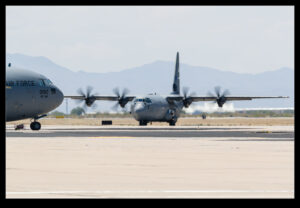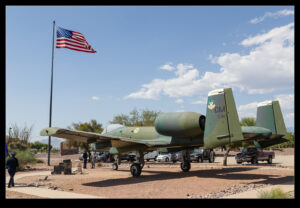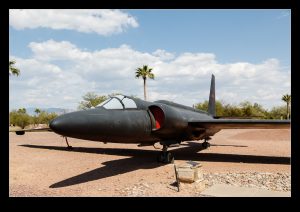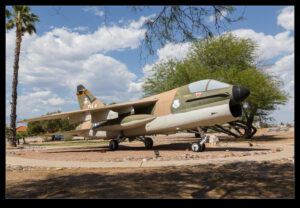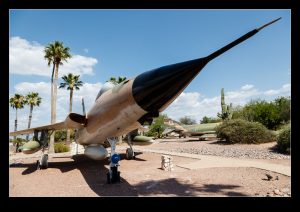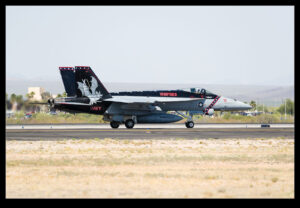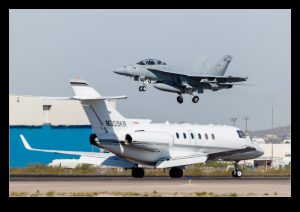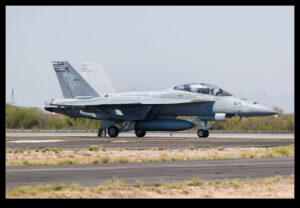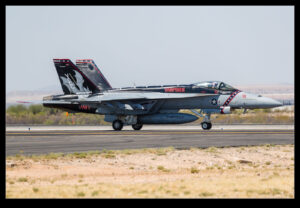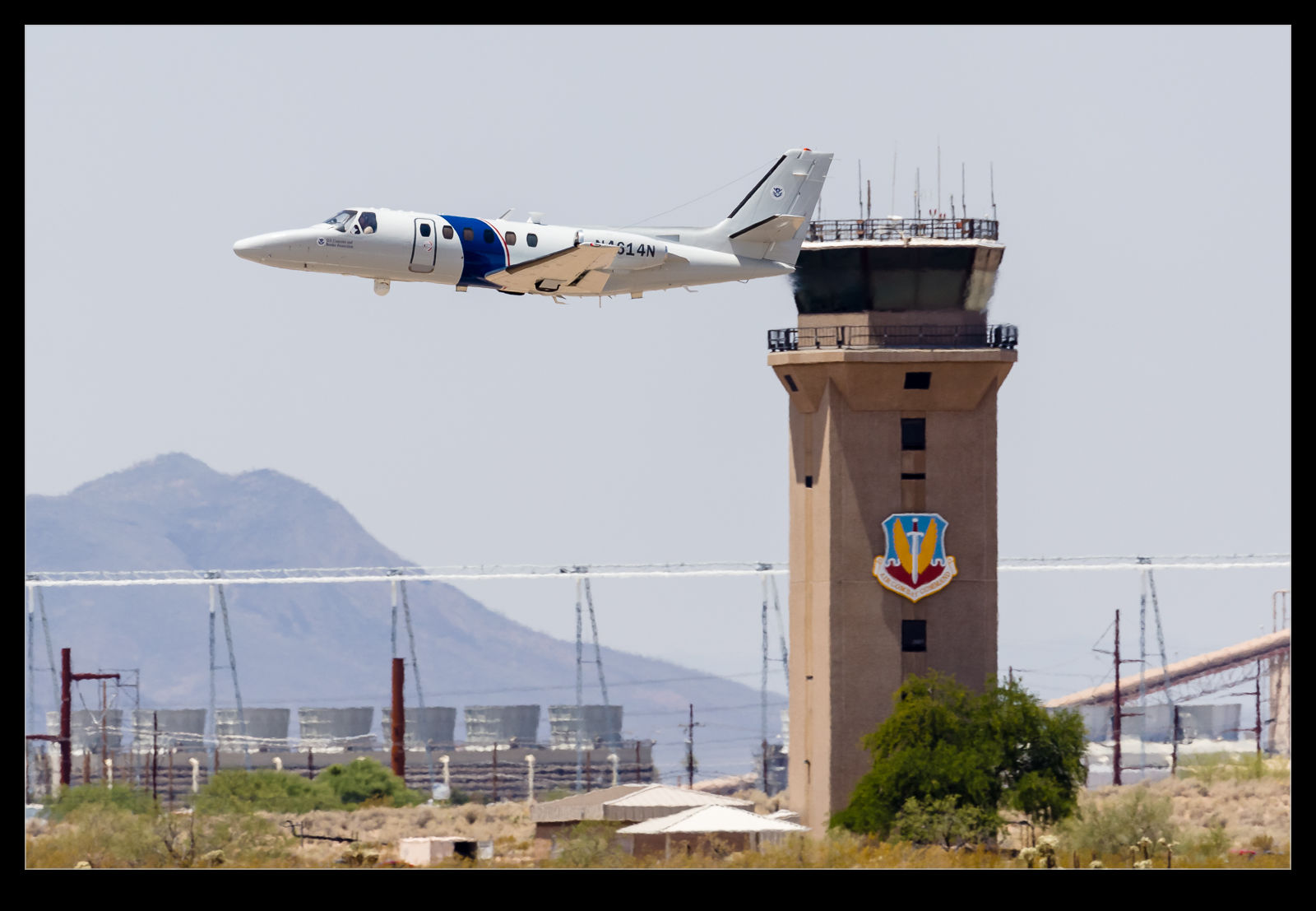 Cessna Citations are not the most exciting business jets. The original versions are particularly uninspiring with their simple design and unswept wing. Normally I might not even bother if I came across one. This example showed up at Davis Monthan while we were on the ramp and it obviously wasn’t a standard version. It belongs to the Customs people. I imagine it spends a lot of time looking at what is going on along the border. Flying out of Tucson would support that idea. I imagine the sensors on board are a lot more interesting than the plane itself.
Cessna Citations are not the most exciting business jets. The original versions are particularly uninspiring with their simple design and unswept wing. Normally I might not even bother if I came across one. This example showed up at Davis Monthan while we were on the ramp and it obviously wasn’t a standard version. It belongs to the Customs people. I imagine it spends a lot of time looking at what is going on along the border. Flying out of Tucson would support that idea. I imagine the sensors on board are a lot more interesting than the plane itself.
Tag Archives: Tucson
Are New Tires That Expensive?
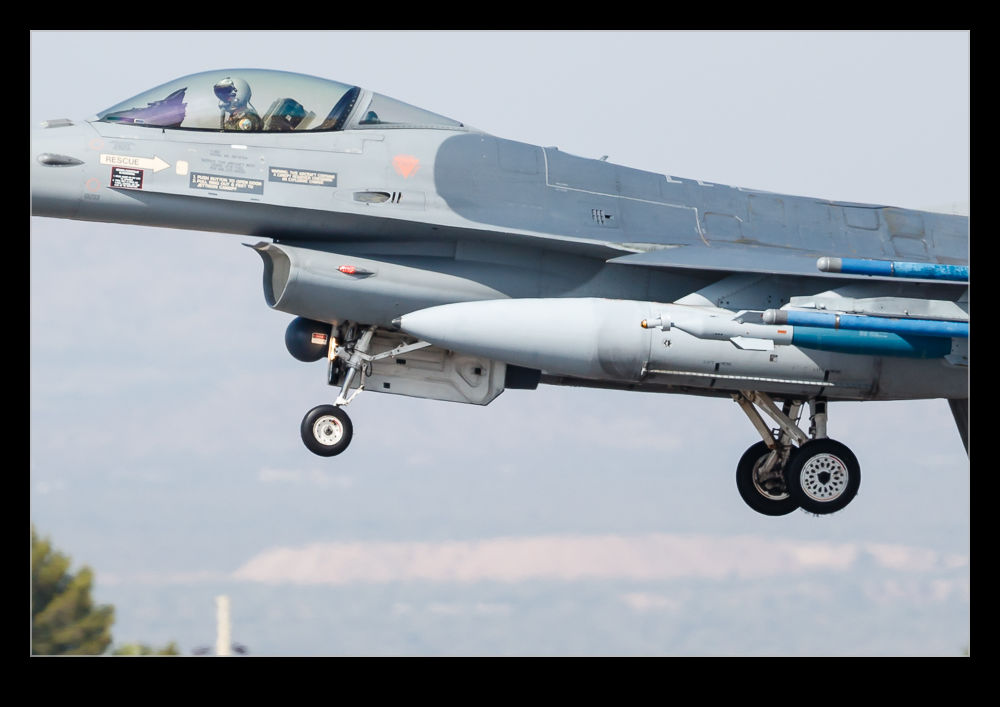 I was skimming through some shots from Tucson to thin out the shots that I got from that day. I looked at one of the shots because I thought that there was something wrong with the shot. When I checked a few of the surrounding shots, I realized that there was nothing wrong. The shot was real. The F-16 had a tire that was looking very sad. I know that budgets are tight but I think they need to change the tires on this jet.
I was skimming through some shots from Tucson to thin out the shots that I got from that day. I looked at one of the shots because I thought that there was something wrong with the shot. When I checked a few of the surrounding shots, I realized that there was nothing wrong. The shot was real. The F-16 had a tire that was looking very sad. I know that budgets are tight but I think they need to change the tires on this jet.
Spooky Metroliner(ish)
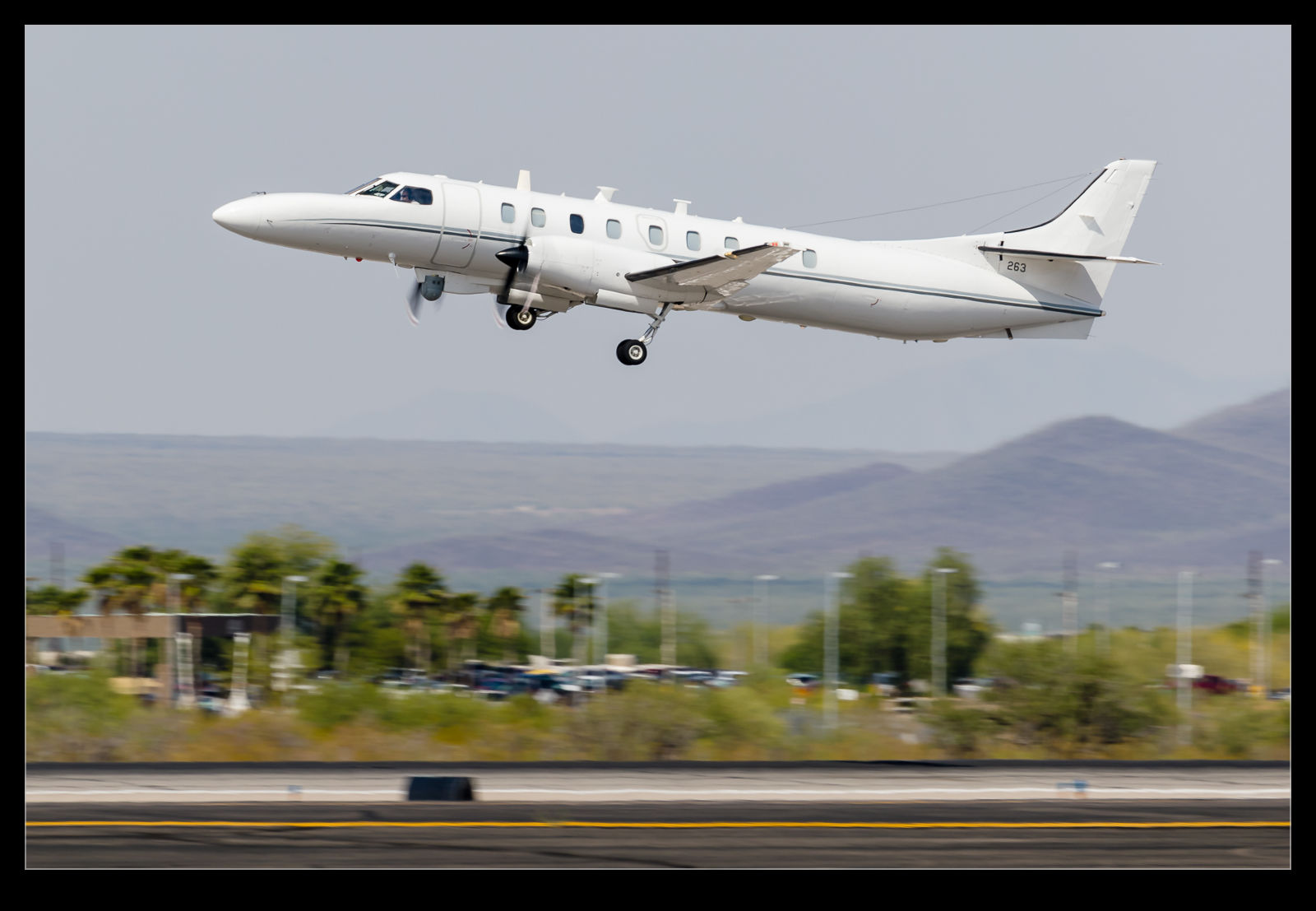 If I hadn’t been with Joe who is a bit more familiar with the regular movements at Tucson International, I would not have been too interested in this aircraft. It looked like a pretty standard C-26 to me. However, Joe was quick to see it and told me it is one that he had not seen move (I can’t recall whether this was ever or just for a long time). Apparently, the turret under the fuselage is for surveillance activities of a spooky nature. Why it was moving on this day (was it watching me?) I have no idea. I was just glad that, rather than dismissing it as I might have done, I found out it was a little different.
If I hadn’t been with Joe who is a bit more familiar with the regular movements at Tucson International, I would not have been too interested in this aircraft. It looked like a pretty standard C-26 to me. However, Joe was quick to see it and told me it is one that he had not seen move (I can’t recall whether this was ever or just for a long time). Apparently, the turret under the fuselage is for surveillance activities of a spooky nature. Why it was moving on this day (was it watching me?) I have no idea. I was just glad that, rather than dismissing it as I might have done, I found out it was a little different.
Blue Air Strikemaster
Sweating on the Range
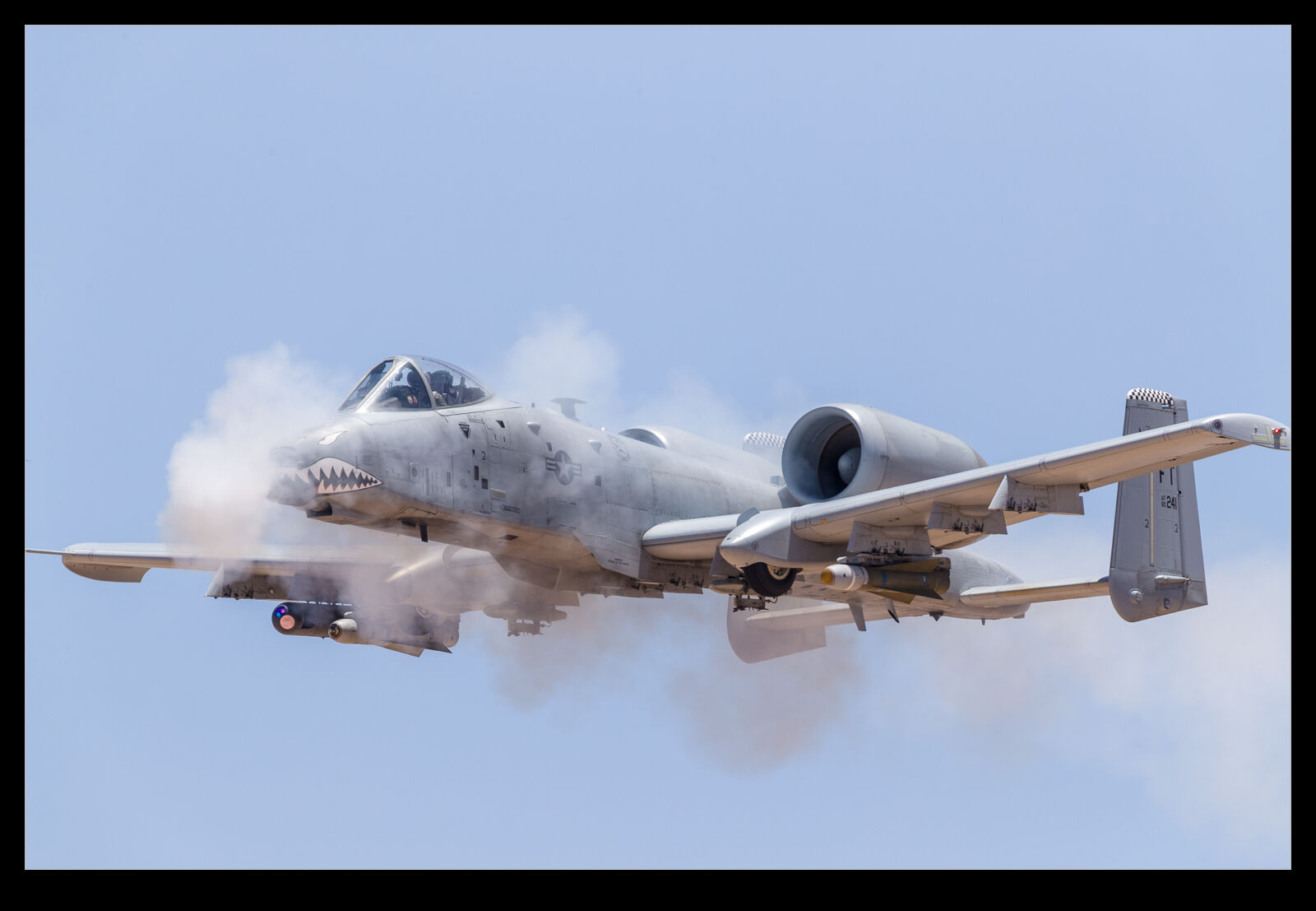 While watching the arrivals for Hawgsmoke was a lot of fun, the main focus was the range work on the first day of exercise. The Air Force put us on a bus for the drive out to the Barry M Goldwater Range south of Gila Bend. This is about a two hour drive. The temperatures were above 100F and the bus was a bit lacking in air conditioning terms. We were toasty as we traveled out. Standing on the range is another thing. It is rather warm standing out in the sun. However, you soon forget how hot it is when the jets arrive.
While watching the arrivals for Hawgsmoke was a lot of fun, the main focus was the range work on the first day of exercise. The Air Force put us on a bus for the drive out to the Barry M Goldwater Range south of Gila Bend. This is about a two hour drive. The temperatures were above 100F and the bus was a bit lacking in air conditioning terms. We were toasty as we traveled out. Standing on the range is another thing. It is rather warm standing out in the sun. However, you soon forget how hot it is when the jets arrive.
 The four ships for each unit have a range slot. They start with the various bomb missions so they are quite a way off while this is underway. You can just see the little practice bombs as they are released if you look closely and then the impact on the target out on the range. They try a few different profiles. Then they move on to the strafe work.
The four ships for each unit have a range slot. They start with the various bomb missions so they are quite a way off while this is underway. You can just see the little practice bombs as they are released if you look closely and then the impact on the target out on the range. They try a few different profiles. Then they move on to the strafe work.
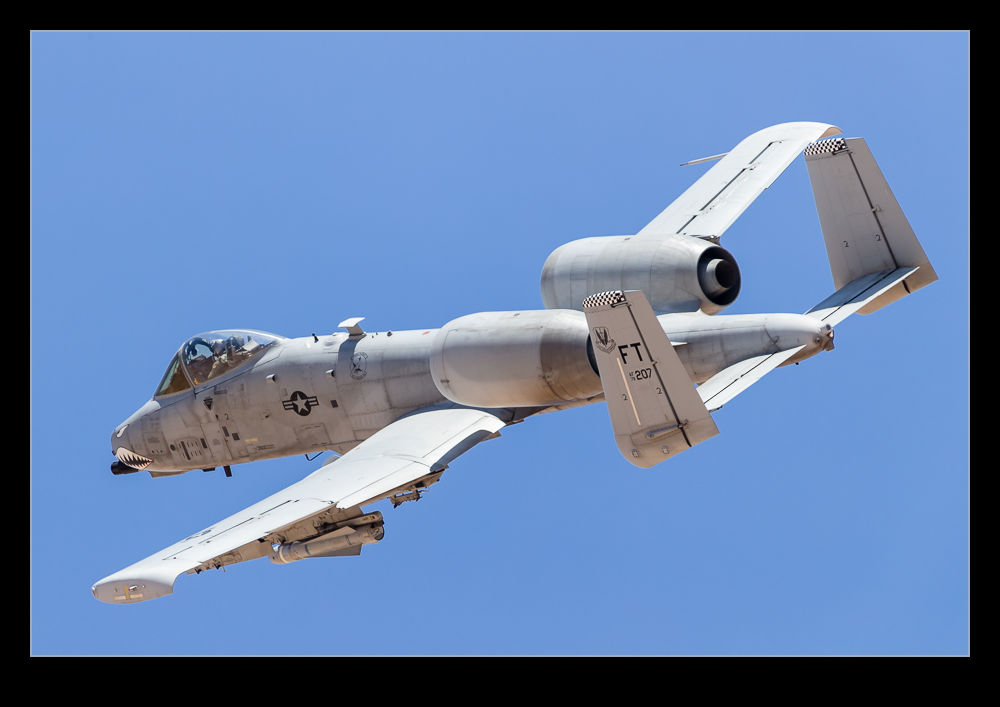 Long range strafe is first with the jets firing from quite a way out from the target. They then move on to low angle strafe where they are firing from very close to our location on the range tower often firing until alongside us. The first experience of the A-10 firing is quite something and it is good to see someone react to their first shoot. After the firing pass, the jets turn overhead our location so you get a great topside view of the jets.
Long range strafe is first with the jets firing from quite a way out from the target. They then move on to low angle strafe where they are firing from very close to our location on the range tower often firing until alongside us. The first experience of the A-10 firing is quite something and it is good to see someone react to their first shoot. After the firing pass, the jets turn overhead our location so you get a great topside view of the jets.
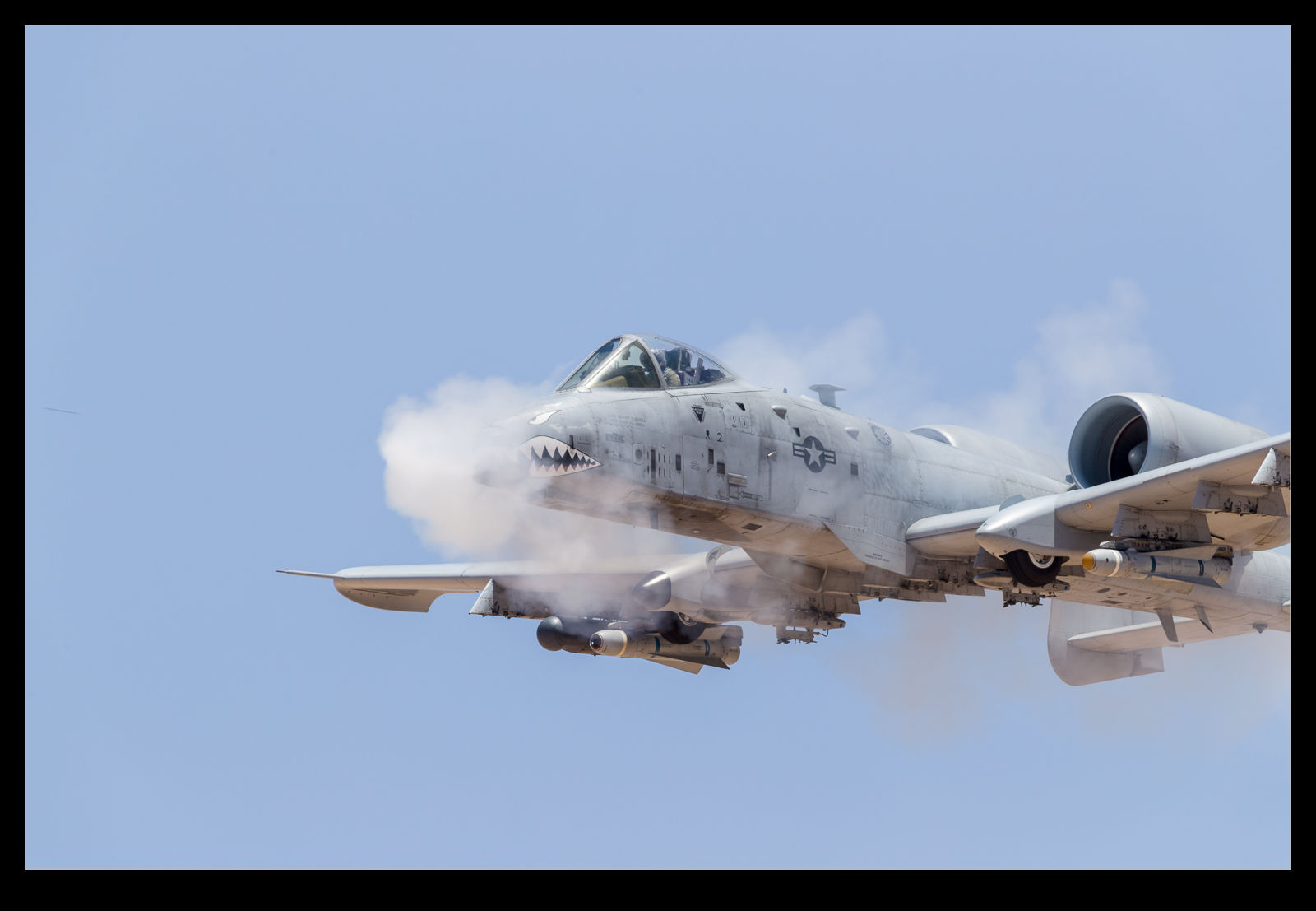 With the different units taking their turns on the range, you can get shots from different perspectives. Close in shots, wider shots, a bit of video – all of this can be done in the available time. Sadly, we have to head off again before too long and it is back on the bus for the return journey. I spent the day drinking a ton of water. The bus was hot, the range was hot and the bus was hot again so I needed every drop I drank. The shower when I got back to the hotel was definitely welcome. I wouldn’t hold this against the visit though. It is a ton of fun and the time is spent with some good people too so you can’t go wrong.
With the different units taking their turns on the range, you can get shots from different perspectives. Close in shots, wider shots, a bit of video – all of this can be done in the available time. Sadly, we have to head off again before too long and it is back on the bus for the return journey. I spent the day drinking a ton of water. The bus was hot, the range was hot and the bus was hot again so I needed every drop I drank. The shower when I got back to the hotel was definitely welcome. I wouldn’t hold this against the visit though. It is a ton of fun and the time is spent with some good people too so you can’t go wrong.
- A USAF A-10 Thunderbolt II fires its 30mm gun at a strafe target on the Barry M Goldwater Range near Gila Bend Arizona.
- A USAF A-10 Thunderbolt II fires its 30mm gun at a strafe target on the Barry M Goldwater Range near Gila Bend Arizona.
- A USAF A-10 Thunderbolt II fires its 30mm gun at a strafe target on the Barry M Goldwater Range near Gila Bend Arizona.
Italian F-16 Not Long For This World
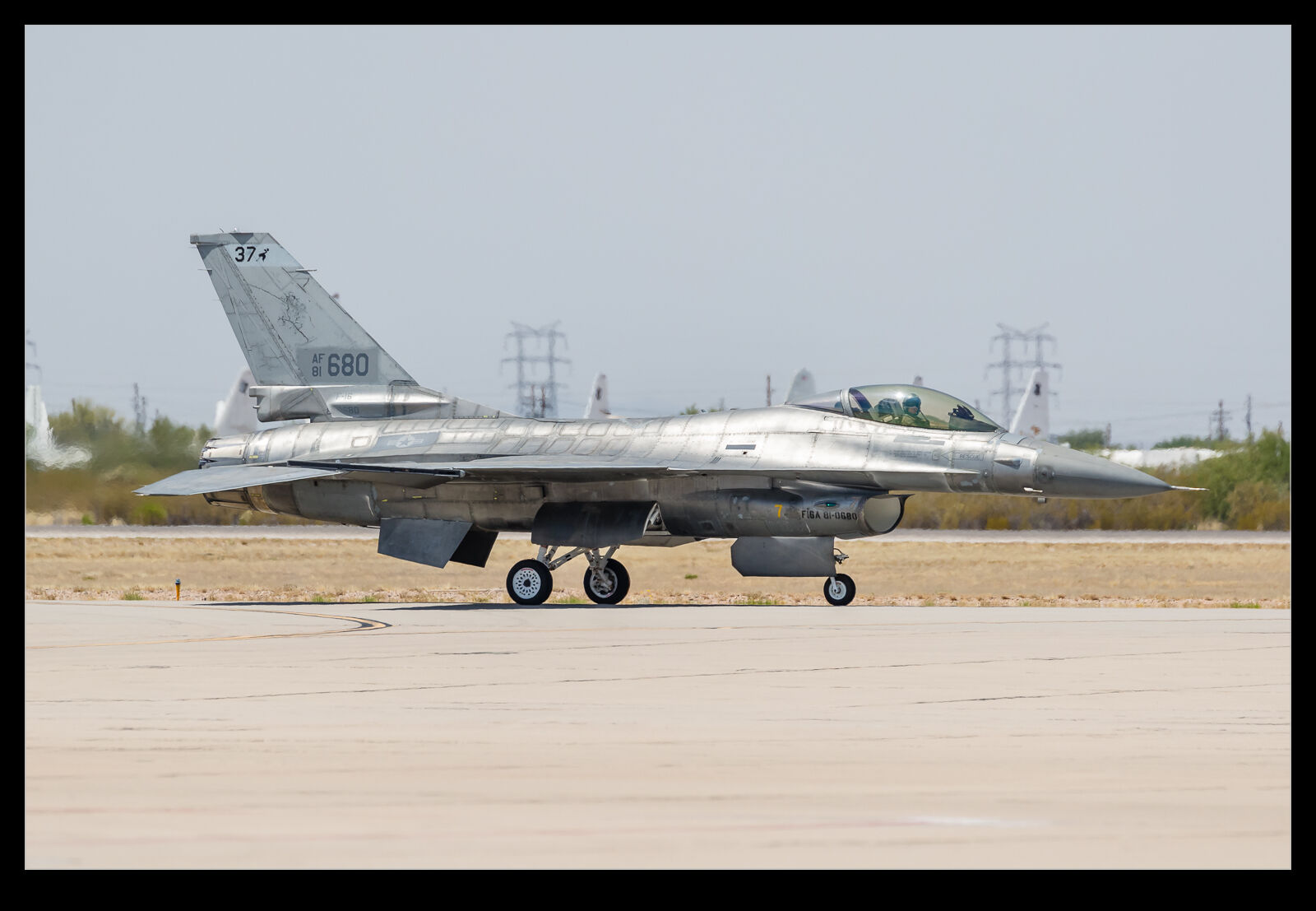 While we were out on the ramp at D-M, an F-16 taxied out for departure. I was curious about the paint finish at first as it didn’t look like a normal F-16. It was also short of markings. Then it became apparent it was an ex-Italian Air Force jet. I was advised that it was on a check flight prior to being sent off for the conversion to target aircraft. I guess it has been on storage at AMARG and now is going off to modification followed by an uncertain future. I wonder how long it will survive.
While we were out on the ramp at D-M, an F-16 taxied out for departure. I was curious about the paint finish at first as it didn’t look like a normal F-16. It was also short of markings. Then it became apparent it was an ex-Italian Air Force jet. I was advised that it was on a check flight prior to being sent off for the conversion to target aircraft. I guess it has been on storage at AMARG and now is going off to modification followed by an uncertain future. I wonder how long it will survive.
Hawgsmoke on the Ramp
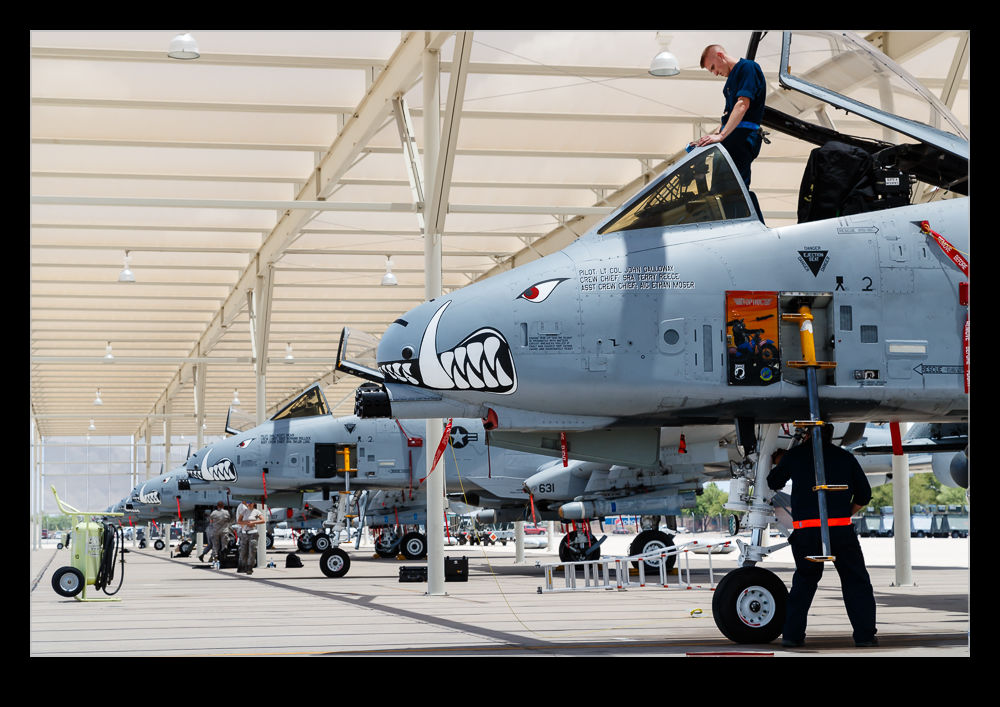 Every two years the A-10 community gets together for the Hawgsmoke competition. I covered it again for GAR and you can see the piece I wrote here. The first day we were there was the arrival day. The plan had been to watch some landings and then to move to the parking ramp area. As it happened, we couldn’t get too close to the runway and some of the arrivals were delayed so we headed to the ramp instead which proved to be a good choice. The A-10s were coming in from the various units.
Every two years the A-10 community gets together for the Hawgsmoke competition. I covered it again for GAR and you can see the piece I wrote here. The first day we were there was the arrival day. The plan had been to watch some landings and then to move to the parking ramp area. As it happened, we couldn’t get too close to the runway and some of the arrivals were delayed so we headed to the ramp instead which proved to be a good choice. The A-10s were coming in from the various units.
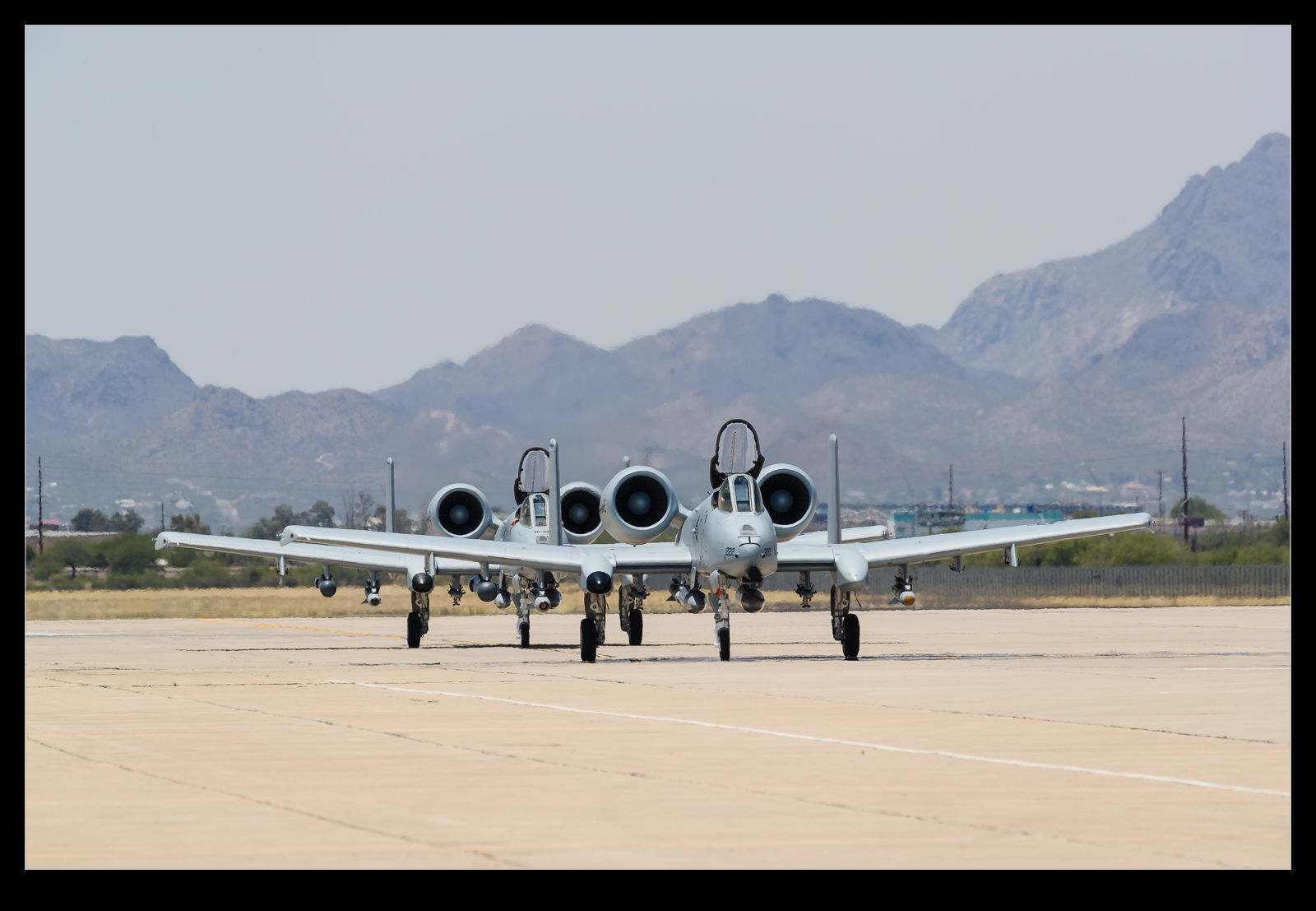 Initially he team were a little concerned about how we could access the area while the jets were on the move but we gradually got more access as they got more confident in us staying in the right places. The jets were taxiing along the outsides and then parking facing inwards. Consequently, we could be in between the rows and out of the way of the aircraft on the move. As more jets were parked up, we could move further out towards to the taxiway and closer to the arriving aircraft. It all worked pretty well.
Initially he team were a little concerned about how we could access the area while the jets were on the move but we gradually got more access as they got more confident in us staying in the right places. The jets were taxiing along the outsides and then parking facing inwards. Consequently, we could be in between the rows and out of the way of the aircraft on the move. As more jets were parked up, we could move further out towards to the taxiway and closer to the arriving aircraft. It all worked pretty well.
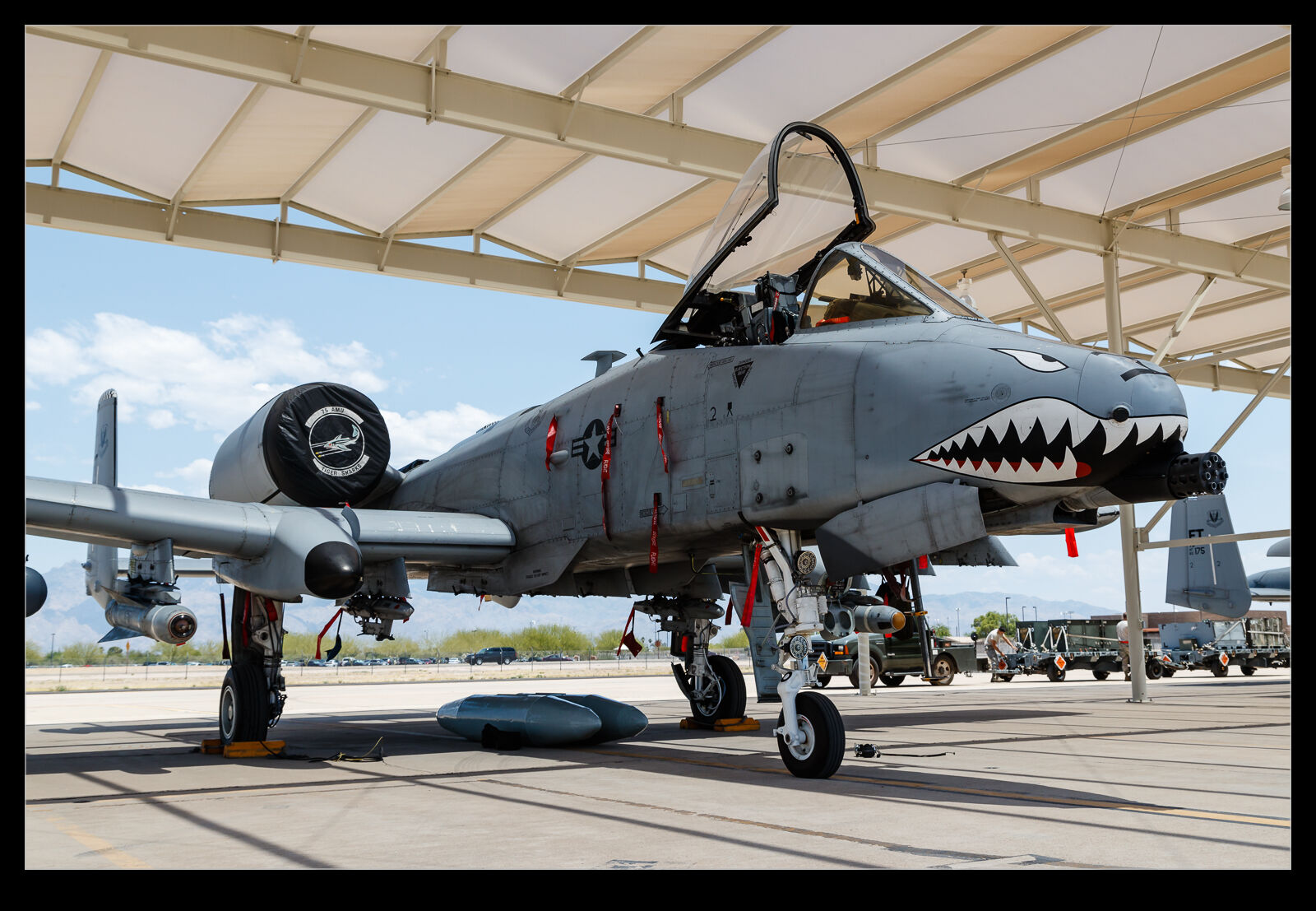 Once the jets were on the ground the ground crews were straight into action taking off he baggage pods and starting to load up with practice bombs ready for the range slots that were to come as the exercise got underway. Most of the jets were parked outside the sun shelters so the crews were getting pretty hot as they worked. Plenty of coolers of water were on hand to keep them in good shape. This was a good start to the coverage of the exercise from my perspective.
Once the jets were on the ground the ground crews were straight into action taking off he baggage pods and starting to load up with practice bombs ready for the range slots that were to come as the exercise got underway. Most of the jets were parked outside the sun shelters so the crews were getting pretty hot as they worked. Plenty of coolers of water were on hand to keep them in good shape. This was a good start to the coverage of the exercise from my perspective.
- USAF A-10 Thunderbolt II aircraft on the ramp at Davis Monthan AFZ in Tucson Arizona taking part in the Hawgsmoke exercise.
- A USAF A-10 Thunderbolt II parked on the ramp at Davis Monthan AFB in Tucson Arizona preparing for Hawgsmoke 2016.
Transport for the Hawgs
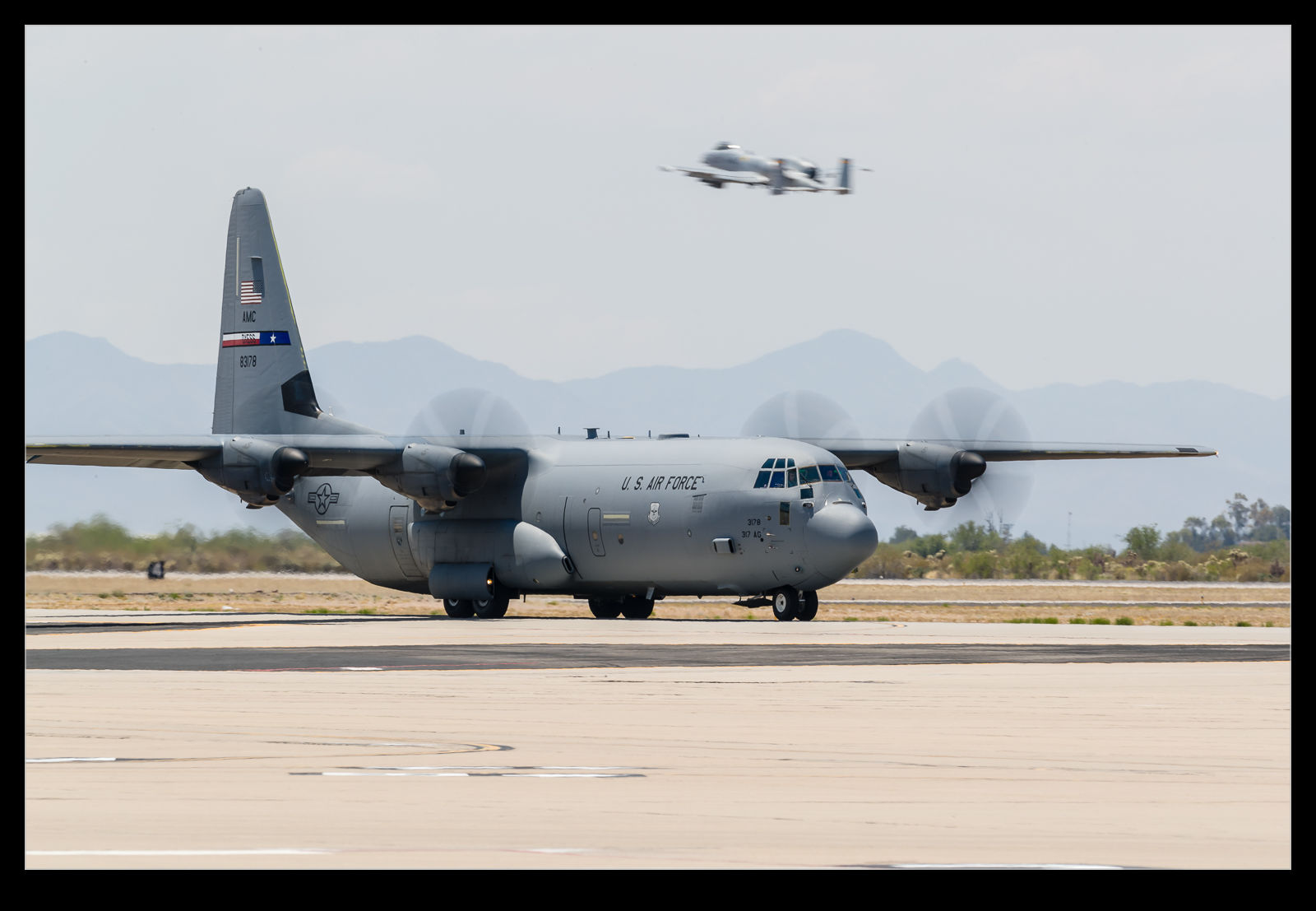 All of the A-10s coming in for Hawgsmoke need some support. There were C-17s and C-5s on the ramp during the exercise. While we were out watching the jets arrive, a C-130J came in as well. It landed and then turned to taxi right back passed us. I don’t know for sure whether it was supporting the A-10s from a unit or it was just a coincidence that it arrived at that time on another mission but I figure that it is a strong chance that is why it was there.
All of the A-10s coming in for Hawgsmoke need some support. There were C-17s and C-5s on the ramp during the exercise. While we were out watching the jets arrive, a C-130J came in as well. It landed and then turned to taxi right back passed us. I don’t know for sure whether it was supporting the A-10s from a unit or it was just a coincidence that it arrived at that time on another mission but I figure that it is a strong chance that is why it was there.
DM’s Museum Jets
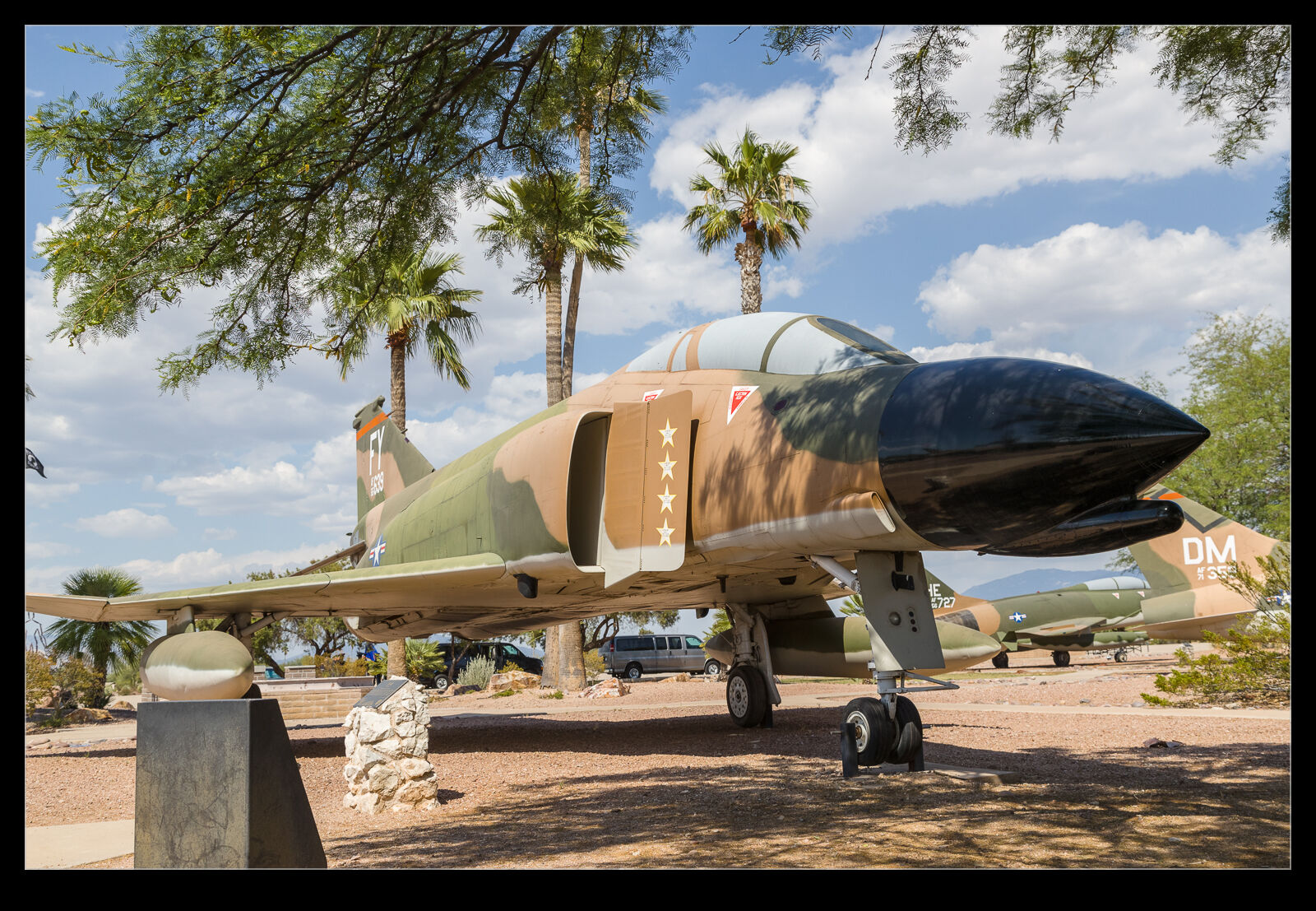 Many airbases have a selection of historic aircraft on display to show something of what has gone before on the base. Sadly, they are often unavailable to shoot when you visit. Davis Monthan AFB has quite a few different planes on display and, fortunately, the location of the Fallen Hawg ceremony during Hawgsmoke was in front of the display A-10. While everything was being set up, we had some time to kill and I was allowed to wander around the other planes.
Many airbases have a selection of historic aircraft on display to show something of what has gone before on the base. Sadly, they are often unavailable to shoot when you visit. Davis Monthan AFB has quite a few different planes on display and, fortunately, the location of the Fallen Hawg ceremony during Hawgsmoke was in front of the display A-10. While everything was being set up, we had some time to kill and I was allowed to wander around the other planes.
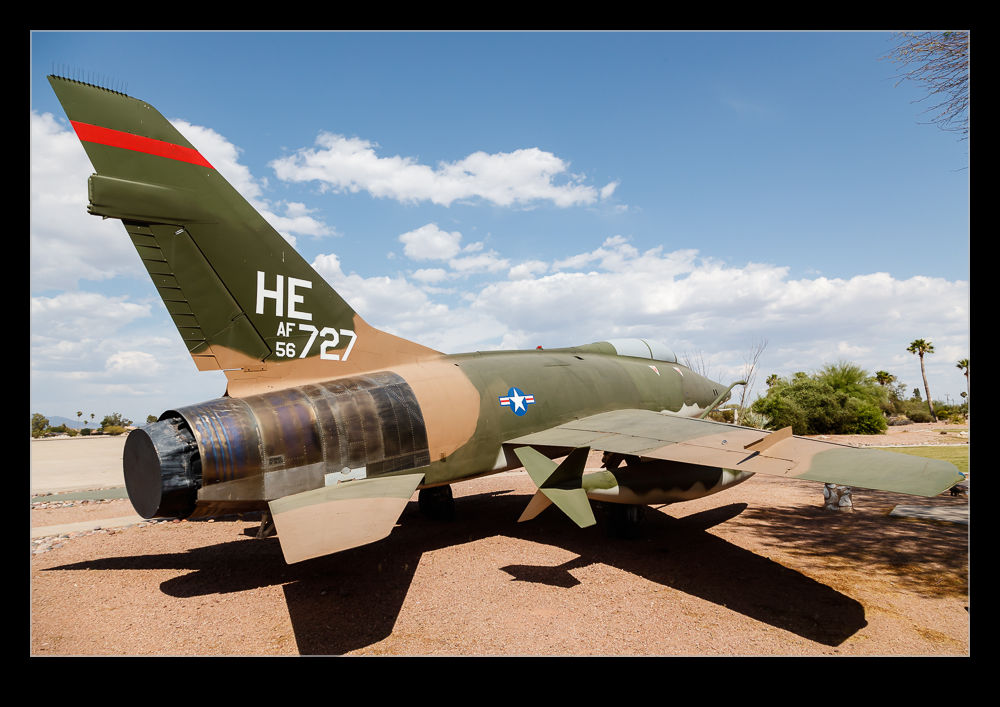 The selection included some obvious DM aircraft like the A-10 and A-7 (even if it was actually a Navy A-7E that they had repainted). A U-2 was a slightly more surprising one to see. I’m not sure how that qualifies but I wasn’t complaining. The F-105, F-100 and F-4 all looked good too. Not only was it nice to be able to shoot them but it gave us something to do since we had got in place pretty early!
The selection included some obvious DM aircraft like the A-10 and A-7 (even if it was actually a Navy A-7E that they had repainted). A U-2 was a slightly more surprising one to see. I’m not sure how that qualifies but I wasn’t complaining. The F-105, F-100 and F-4 all looked good too. Not only was it nice to be able to shoot them but it gave us something to do since we had got in place pretty early!
Vampires Out in Daylight
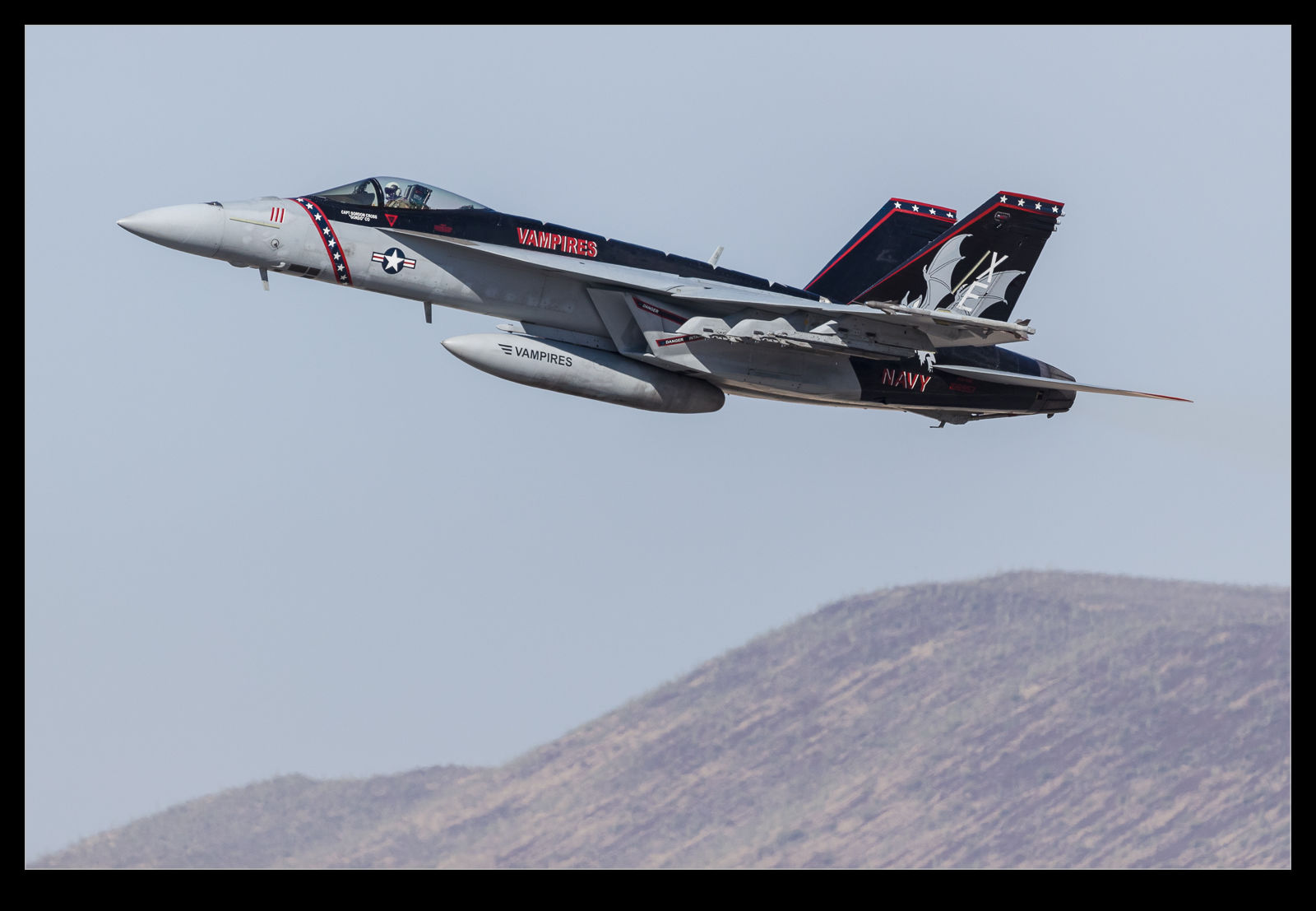 Tucson International is a place I was expecting to shoot F-16s of various nations. I had not expected to see any Super Hornets. However, the Navy had other plans. A couple of VX-9 Vampires jets were detached and carrying out missions with some of the based test aircraft. One of them was the color jet too! This was a very pleasant surprise. They took off in the morning for a mission and we got to see them head off. They returned ahead of my expectations and I wasn’t in the right place to get them on approach. Even so, a great addition to the day. I was flying home later that day and, while looking out of the window at the gate, they taxied by again so I guess they were getting a lot of flying in.
Tucson International is a place I was expecting to shoot F-16s of various nations. I had not expected to see any Super Hornets. However, the Navy had other plans. A couple of VX-9 Vampires jets were detached and carrying out missions with some of the based test aircraft. One of them was the color jet too! This was a very pleasant surprise. They took off in the morning for a mission and we got to see them head off. They returned ahead of my expectations and I wasn’t in the right place to get them on approach. Even so, a great addition to the day. I was flying home later that day and, while looking out of the window at the gate, they taxied by again so I guess they were getting a lot of flying in.
